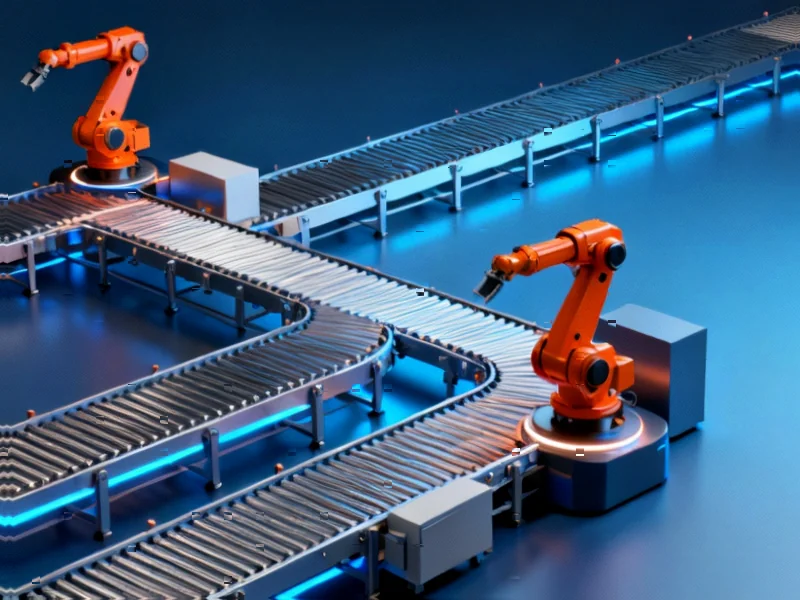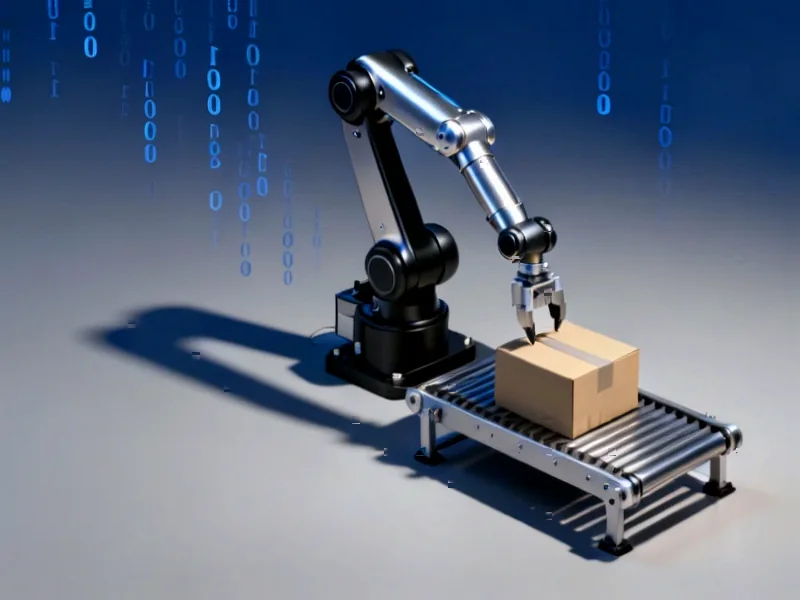Amazon’s Automation Ambitions
Retail giant Amazon is planning a substantial increase in robotic automation across its operations, with internal documents indicating a goal of 75% automation, according to reports from the New York Times. Sources familiar with the matter suggest this strategic shift could potentially replace more than a half million human jobs as the company seeks to streamline its massive global operations.
Table of Contents
Current Workforce and Expansion Plans
Currently standing as the nation’s second-largest employer with approximately 1.5 million workers worldwide, Amazon has experienced significant growth in recent years, particularly during the COVID-19 pandemic that accelerated online shopping trends. Despite plans to dramatically reduce hiring in coming years, analysts suggest the company expects to sell twice as many products by 2033 compared to current volumes, creating a paradox of reduced human staffing amid expanded business operations.
Automation in Action
The shift toward automation is already visible in facilities like the newly built warehouse in Shreveport, Louisiana, where approximately a thousand robots handle much of the packing and shipping work. According to the report, this automated approach allows Amazon to employ about a quarter fewer workers than traditional facilities require. Internal documents indicate that by 2026, the Louisiana facility will need only half the employees it would have required before robot implementation.
The company reportedly plans to replicate this automation model in approximately 40 additional facilities by the end of 2027, significantly expanding its robotic workforce which already numbers around one million machines.
Strategic Communication and Workforce Impact
Amazon is already developing public relations strategies to manage the transition, according to sources cited in the report. Internal discussions reportedly include shifting corporate language from terms like “automation,” “AI,” and “robot” to more neutral phrases such as “advanced technology” and “cobot” (robots collaborating with humans). The company also plans to emphasize the creation of new technical positions focused on maintaining robotic systems, though analysts note these roles typically require more specialized training and will number far fewer than the positions they replace.
Executive Pressure and Strategic Shift
Amazon executives, including CEO Andy Jassy, are reportedly under pressure from the company‘s board of directors to improve operational efficiency. “For years and years, they were really investing for growth, and in the last three years the company’s focus has shifted to efficiencies,” Wall Street analyst Justin Post told the New York Times. This strategic realignment represents a significant departure from Amazon’s previous growth-focused approach to workforce management.
Disproportionate Impact and Labor Relations
The automation initiative may disproportionately affect minority workers, particularly Black employees, according to the report. The Times indicates that Amazon warehouse workers are approximately three times more likely to be Black compared to the typical American worker. Additionally, the increased reliance on robotics presents another potential advantage for the company regarding labor relations, as robots cannot unionize. Amazon has historically maintained a strained relationship with organized labor, including the recent dismissal of 150 unionized drivers in New York, which the company attributed to canceled contracts with a subcontractor.
As Amazon moves forward with its automation strategy, industry observers suggest the company will need to carefully balance operational efficiency with workforce management and public perception during this transformative period.
Related Articles You May Find Interesting
- GM’s Strategic Pivot: Navigating EV Market Realities with Cost-Cutting and Focus
- OpenAI’s ChatGPT Atlas Browser Redefines Industrial Web Navigation with AI Integ
- GE Aerospace’s Operational Excellence Fuels Record Quarter and Industry Leadersh
- Xbox Teases Premium Next-Gen Console Strategy Amid Shifting Brand Focus
- Apple’s Foldable iPad Faces Extended Delay to 2029 as Engineering Hurdles Mount
References & Further Reading
This article draws from multiple authoritative sources. For more information, please consult:
- https://sustainability.aboutamazon.com/employees
- https://www.ziffdavis.com/terms-of-use
- https://www.ziffdavis.com/ztg-privacy-policy
- http://en.wikipedia.org/wiki/Amazon_(company)
- http://en.wikipedia.org/wiki/Robot
- http://en.wikipedia.org/wiki/Automation
- http://en.wikipedia.org/wiki/Online_shopping
- http://en.wikipedia.org/wiki/The_New_York_Times
This article aggregates information from publicly available sources. All trademarks and copyrights belong to their respective owners.
Note: Featured image is for illustrative purposes only and does not represent any specific product, service, or entity mentioned in this article.



